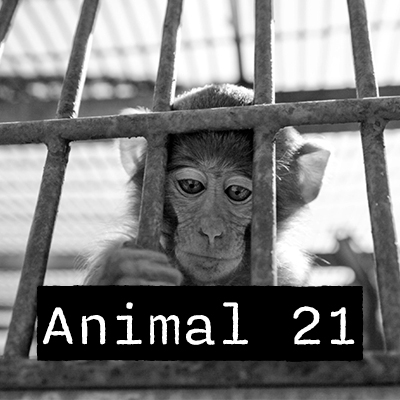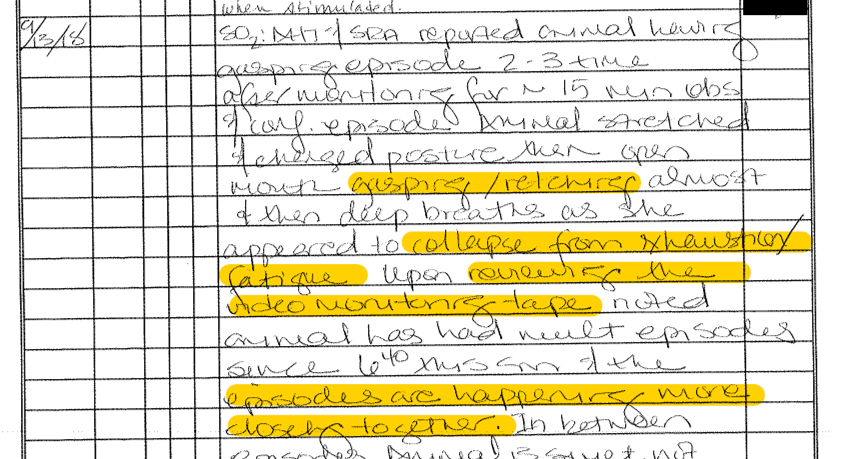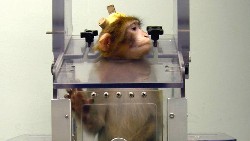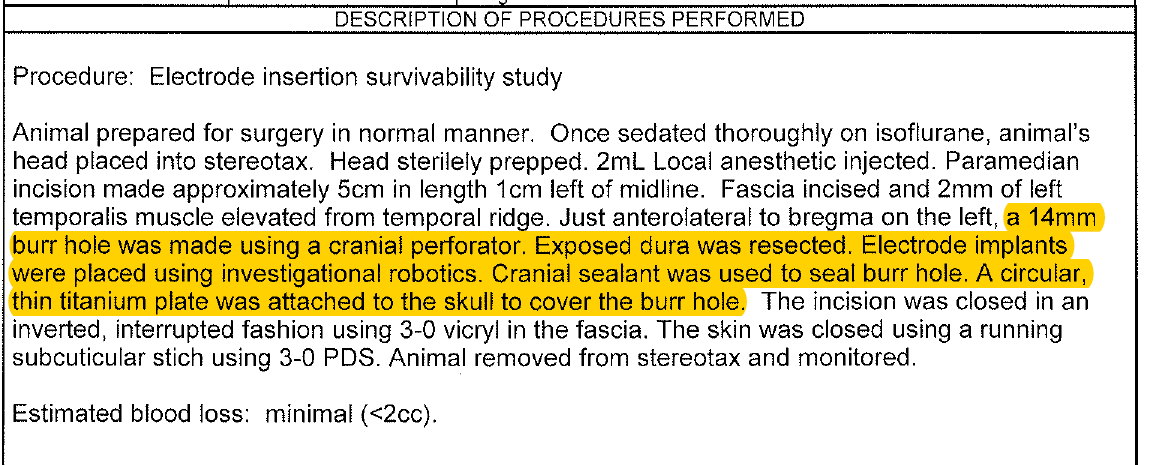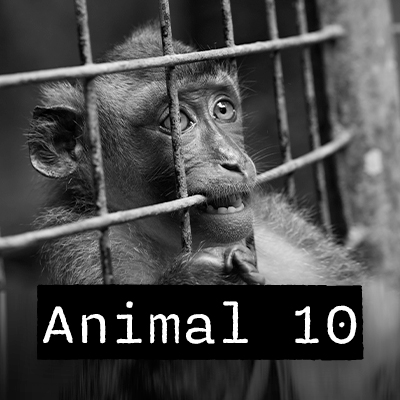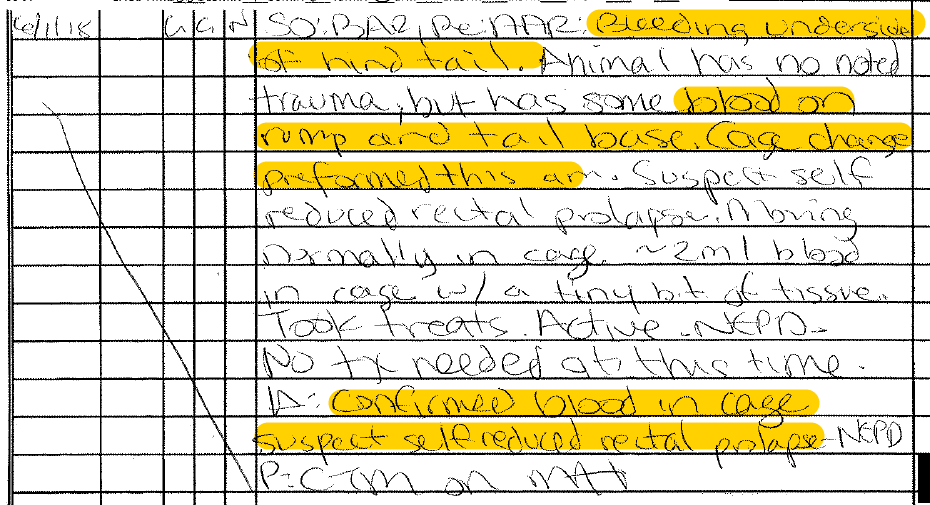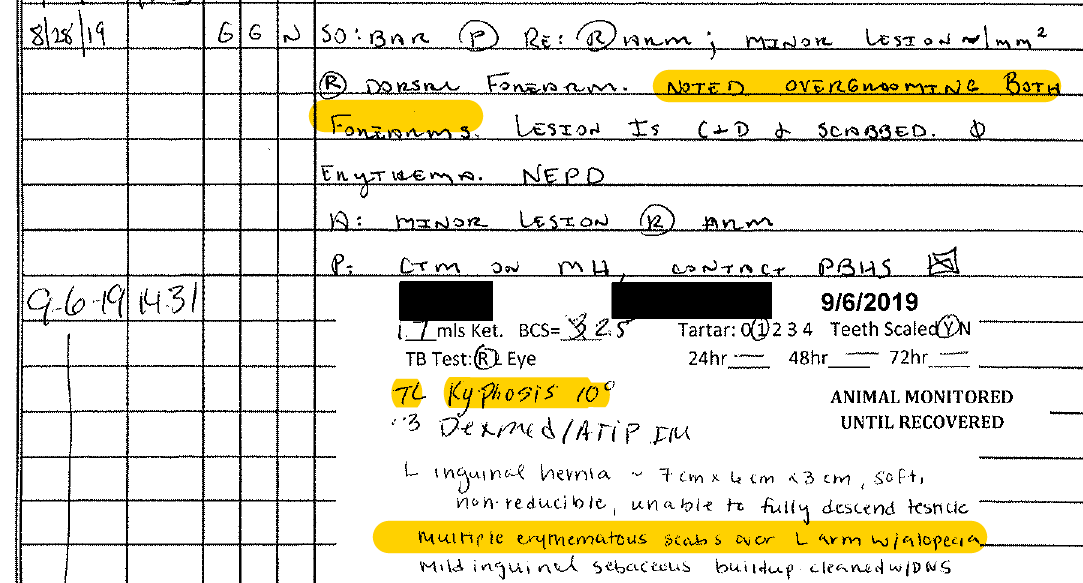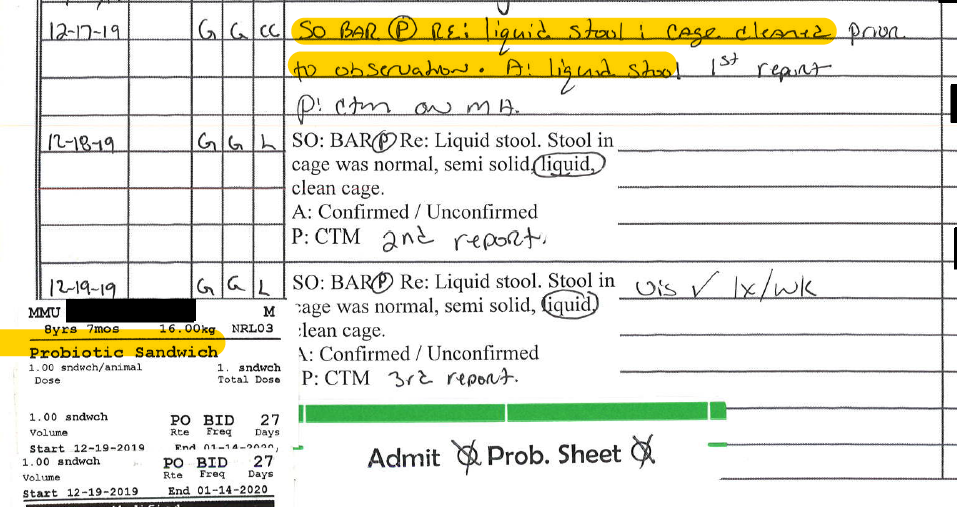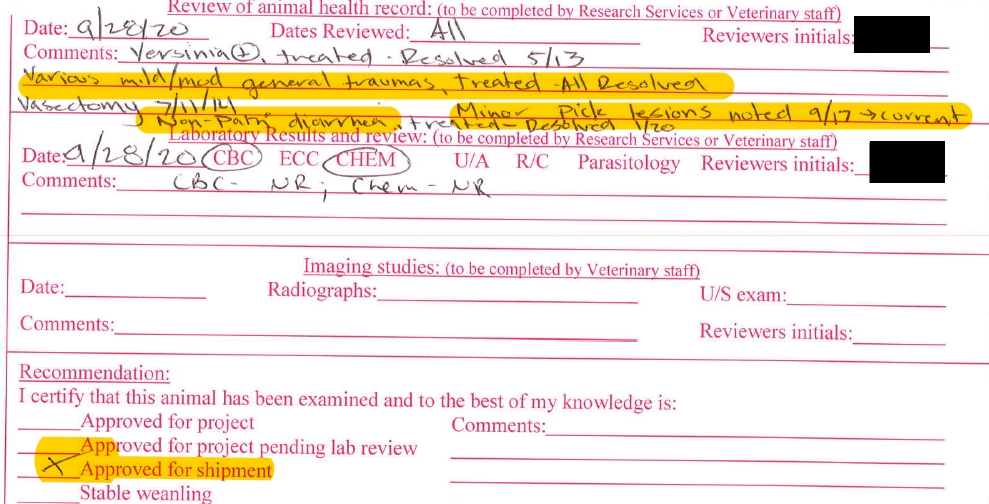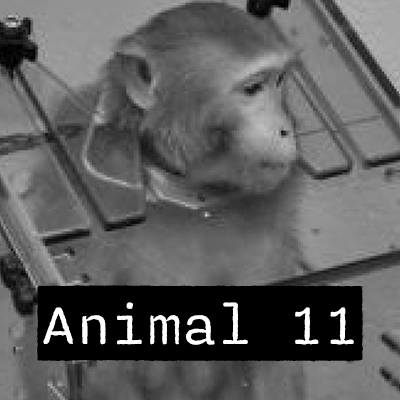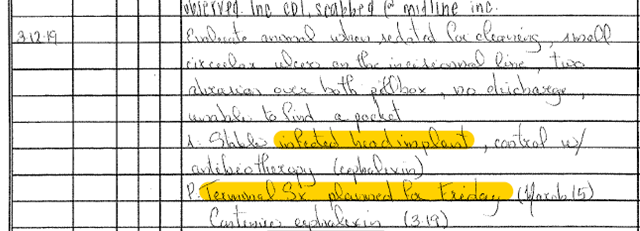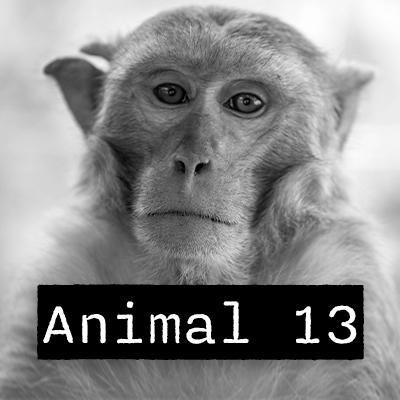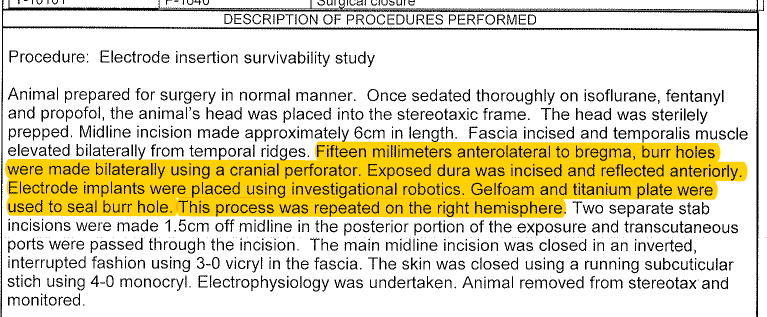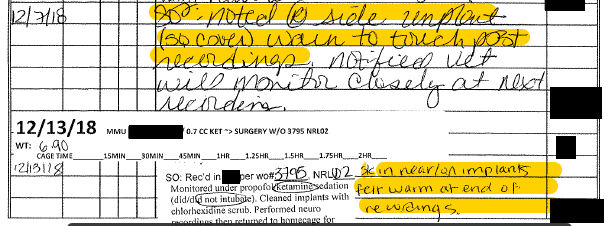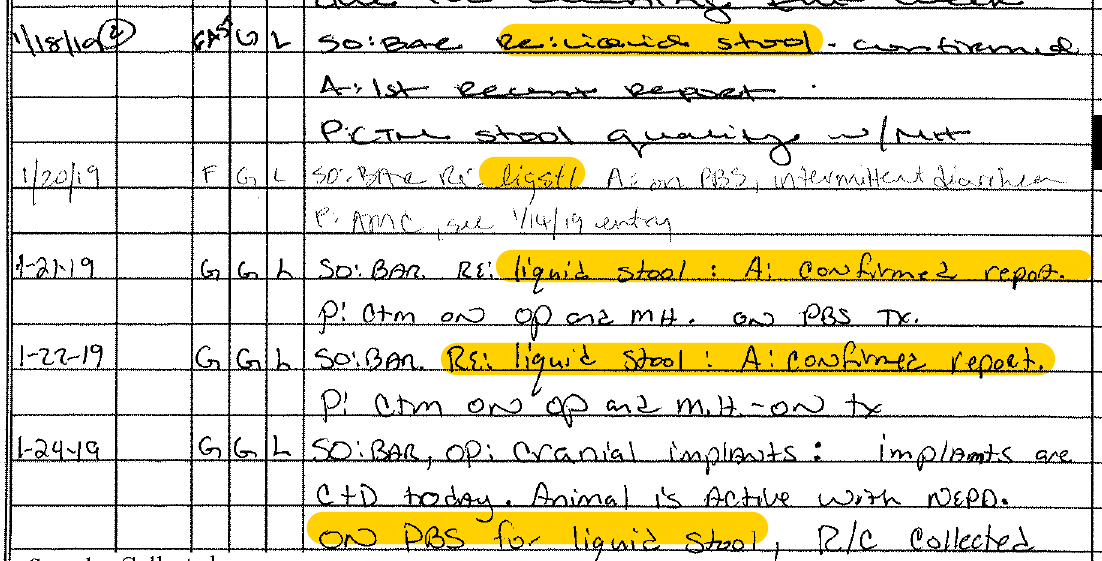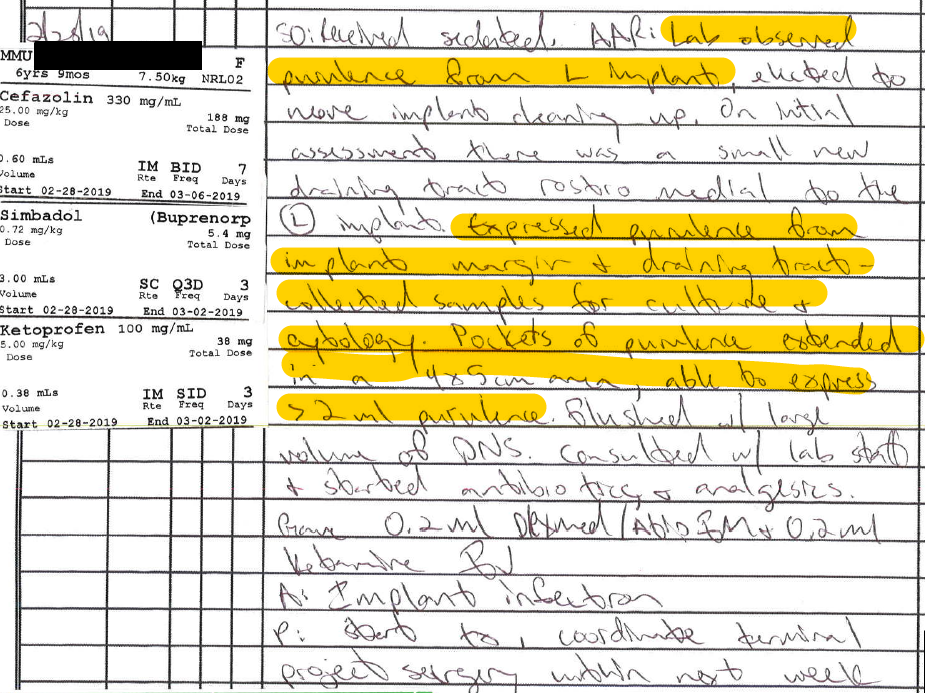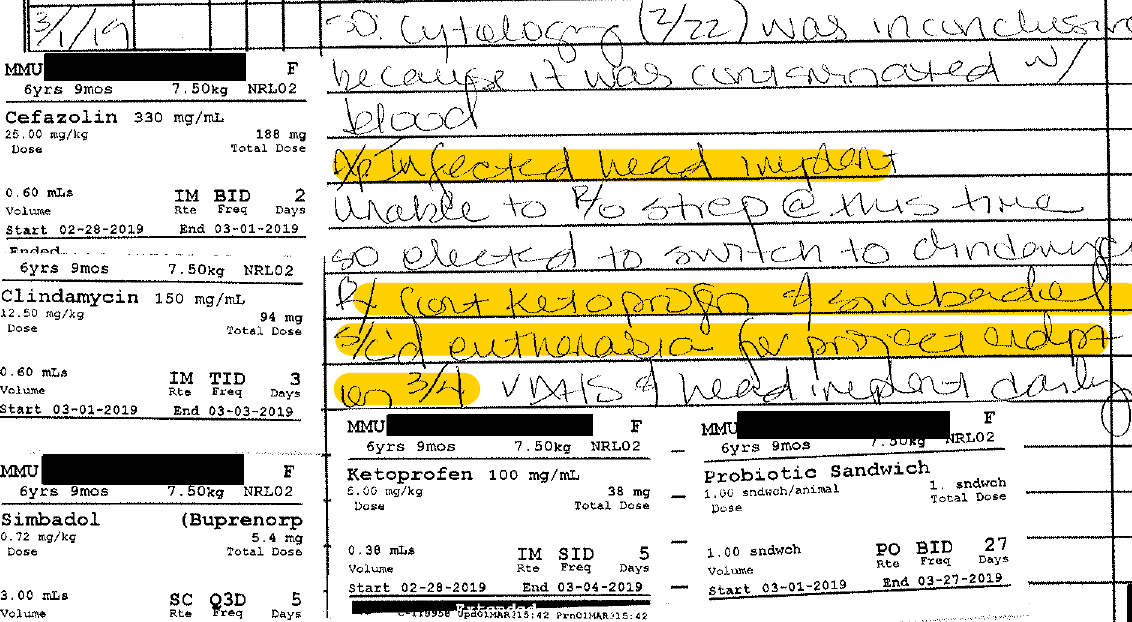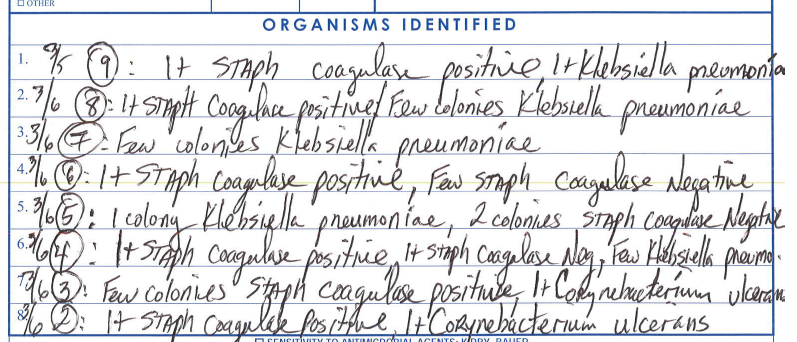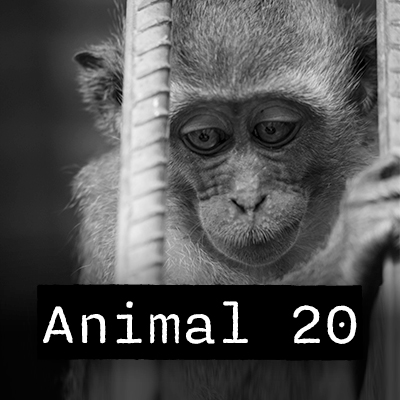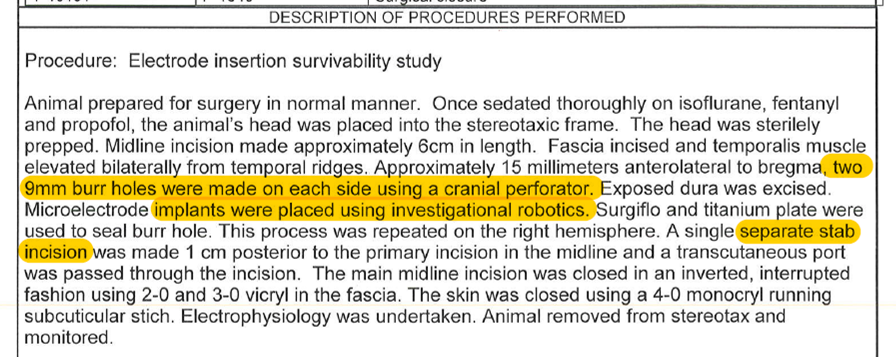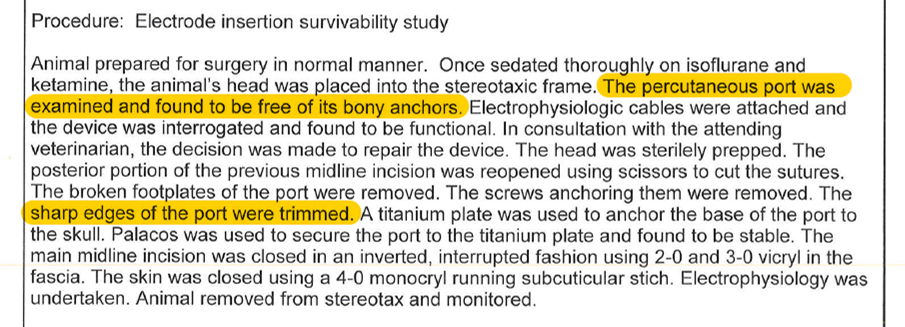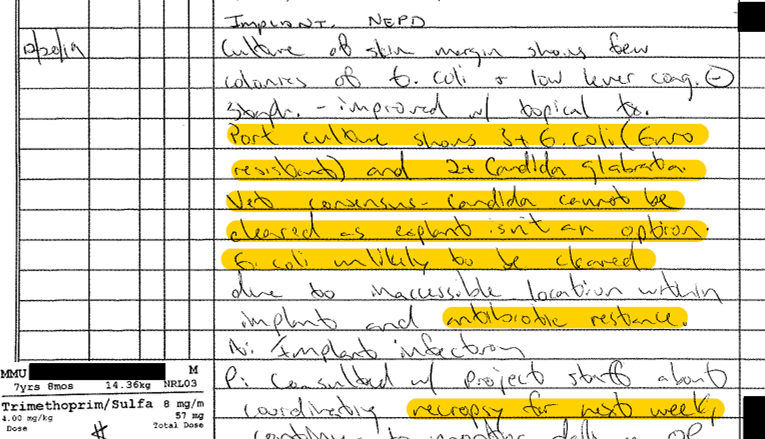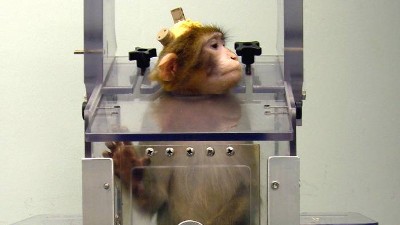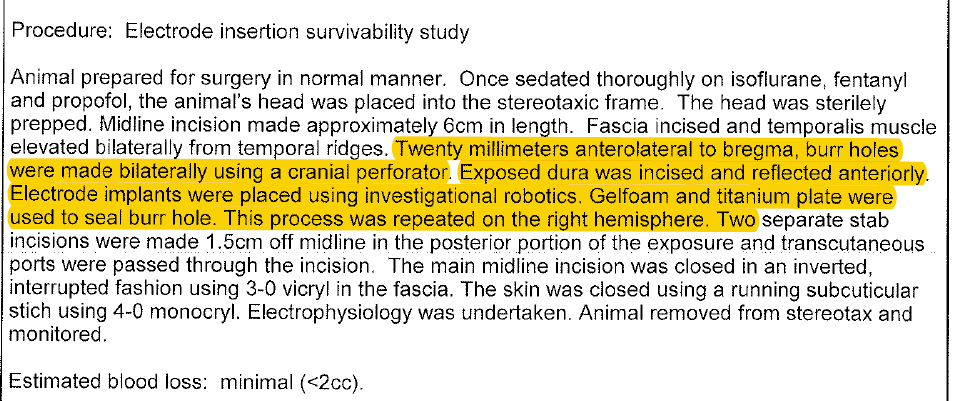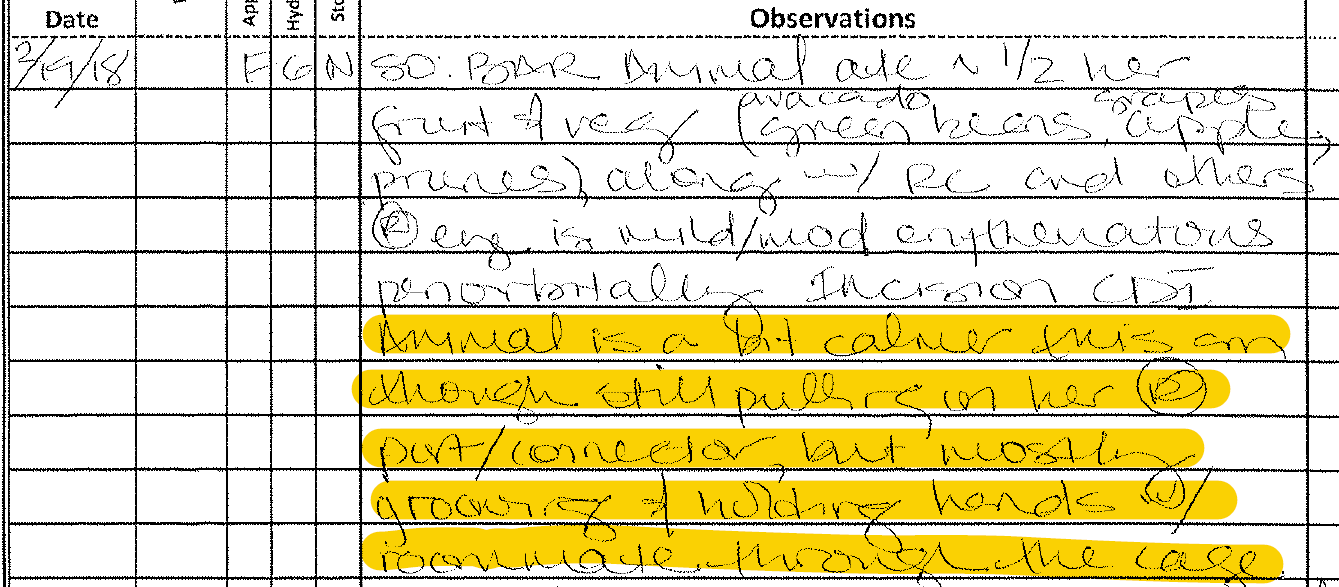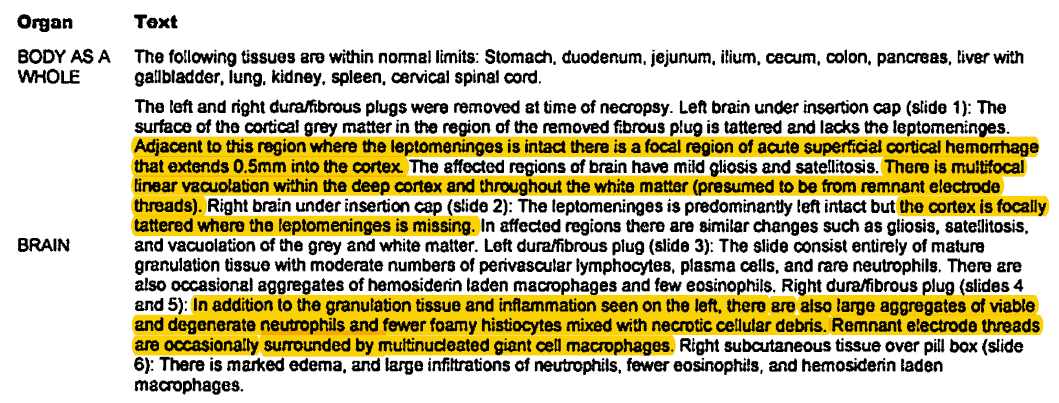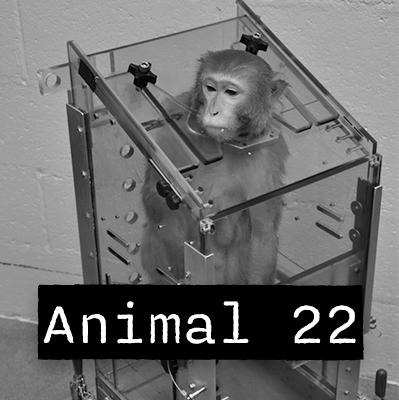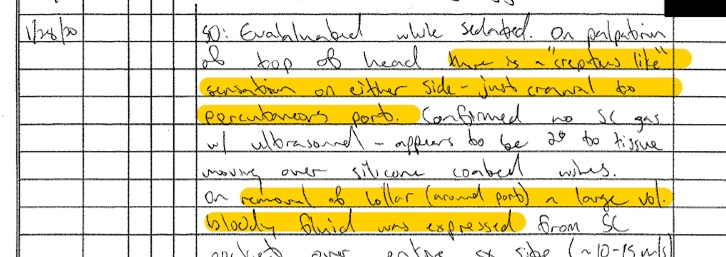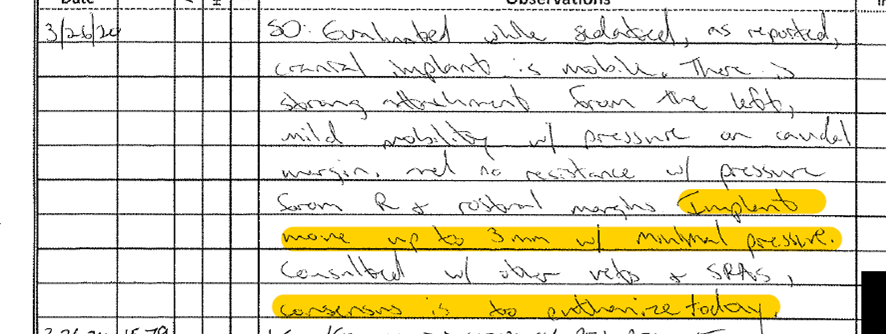Filter Results
Showing 21 - 30 of 33 results
Animal 21
Through 2020, Elon Musk’s company Neuralink paid $1.4 million to the University of California, Davis, to use its facilities, where experimenters removed portions of monkeys’ skulls to implant electrodes in the animals’ brains related to the development of a “brain-machine interface.” Only in 2022, following a public records lawsuit by the Physicians Committee for Responsible Medicine, did the troubling details of these experiments begin to come to light. The company is still conducting experiments on animals at its facilities in California and Texas.
This is the story of one monkey, “Animal 21.” She was a macaque who suffered for days at the hands of Neuralink employees. She was 7 years old on Sept. 10, 2018 when they made an incision along the side of her head & cut the underlying muscle.
They drilled two burr holes into her skull, inserted electrodes attached to implants, and closed the holes with “cranial sealant.” The Neuralink surgeon used Bioglue, a surgical adhesive, which was not approved for use in this surgery and is known to be toxic to nerve tissue.
The next day, Animal 21 was “shivering” and her “legs seem weaker.” UC Davis staff believed she was suffering from a “brain edema” (i.e., swelling in her brain).
Later that day, staff noted that Animal 21 was “declining” and that it’s “probably from cerebral edema.” They “elected euthanasia” on Sept. 11 but kept her alive for two more days as her health deteriorated.
The next morning, UC Davis staff noted that Animal 21 was suffering from ataxia, meaning she had lost coordination and balance. She was experiencing “paresis” or partial paralysis of “both leg.” She had a “moderate to severe neurologic deficit” and “depression.”
The Neuralink experimenter in charge (the “P.I.” or principal investigator) wanted to “keep the animal for another 24 hrs” even though they were told the “long-term problem associated w/ paresis.”
The next day, she was even worse. On Sept. 13, Animal 21 was “pale,” there wa “yellow [discharge] from implant,” and there was vomit in her cage.
She was seen “gasping/retching” and “collapse[d] from exhaustion/fatigue.” After “reviewing the video monitoring tape,” UC Davis staff noticed that the “episodes are happening more closely together.”
When staff at UC Davis finally euthanized Animal 21 on Sept. 13, 2018, the necropsy report was shocking. Bioglue was “covering and compressing a large area of the left cerebrum” and blood had built up on the surface of the brain (“subdural hemorrhage”).
They also found “acute” ulcers (sores) in her esophagus “likely due to vomiting” and blood (“melena”) in her stomach.
The necropsy report for Animal 21 made it clear that the surgical adhesive Bioglue was to blame. “Bioglue was toxic to the adjacent tissues (as described in the contraindications and warning sections of the IFU),” using the acronym for “Instructions for Use.”
Despite this tragic outcome, 11 months later, the Neuralink surgeon used Bioglue during an experimental procedure. Again, the adhesive leaked onto the animal’s brain. Neither incident was reported by UC Davis to the U.S. Department of Agriculture as required by the federal Animal Welfare Act, and the agency refused to cite the university and Neuralink for a violation even after the Physicians Committee filed a complaint in February 2022.
Animal 12
Through 2020, Elon Musk’s company Neuralink paid $1.4 million to the University of California, Davis, to use its facilities, where experimenters removed portions of monkeys’ skulls to implant electrodes in the animals’ brains related to the development of a “brain-machine interface.” Only in 2022, following a public records lawsuit by the Physicians Committee for Responsible Medicine, did the troubling details of these experiments begin to come to light. The company is still conducting experiments on animals at its facilities in California and Texas.
This is the story of one monkey, “Animal 12.” She was a macaque who was almost 7 years old when she was used in Neuralink experiments at UC Davis in February 2018. She was first put through “chair training,” where she was restrained like the animal in this picture.
On July 17, Neuralink experimenters drilled holes in her skull and implanted electrodes into her brain using a robot. A titanium plate was then attached with bone screws “to cover the burrhole.”
Following the experimental procedure, Animal 12 began to have seizures. She was put on an anti-convulsant medication.
The day after invasive brain surgery, Animal 12 had an enlarged right pupil, a lazy eye, and conjunctivitis in both eyes. She was also licking the cage bars. Her implant was infected, and she was put on antibiotics.
Two days after surgery, Animal 12 was still not eating much. She also vomited in the morning and was noted to have a “decline in stool quality” and diarrhea—possibly from antibiotics. She was put on probiotics.
On July 27, lab staff noted that they only needed to continue treatment “until project end point July 31,” at which point Animal 12 was scheduled to be killed by Neuralink.
On July 30, Animal 12 was noted to be “aggressing at cage front” and to have a scabbed incision.
The next day, Animal 12 was sedated with ketamine and killed by Neuralink staff so her brain could be removed. The necropsy indicated she had stomach inflammation.
Animal 10
Through 2020, Elon Musk’s company Neuralink paid $1.4 million to the University of California, Davis, to use its facilities, where experimenters removed portions of monkeys’ skulls to implant electrodes in the animals’ brains related to the development of a “brain-machine interface.” Only in 2022, following a public records lawsuit by the Physicians Committee for Responsible Medicine, did the troubling details of these experiments begin to come to light. The company is still conducting experiments on animals at its facilities in California and Texas.
This is the story of one monkey, “Animal 10.” He was a 7-year-old macaque in January 2018 when he was assigned to the Neuralink project. At the company’s request, Animal 10 received less food so he would be kept hungry during experiments.
In April 2018, Neuralink experimenters injected Animal 10 with ketamine and fitted a hard plastic collar tightly around his neck. This collar would remain for more than a year.
Neuralink used such collars to make it easy to remove a monkey from his cage with a pole. They would then transfer him to a restraint chair for use in experiments while he is awake and conscious like the monkey in this picture.
On June 1, UC Davis staff noted that Animal 10 had blood in his cage, on his rump, and at the base of his tail. Staff suspected that the cause was a rectal prolapse.
On Aug. 27, staff observed that Animal 10 had lesions on his right forearm from self-injurious behavior and picking. This is common in monkeys in labs who suffer severe psychological stress.
On Sept. 3, staff noted that the lesions on Animal 10’s arms had scabbed over.
On Sept. 5, staff observed that Animal 10 now had lesions on his right arm and his left leg. This “trauma” was again thought to be a result of self-mutilation and picking behavior.
On Sept. 24, UC Davis staff noted that Animal 10 still had trauma to his left leg from self-mutilation, including a lesion on his ankle and redness. They waited for an assessment from behavioral health staff.
On Oct. 15, a veterinarian said that Neuralink’s request that Animal 10 be deprived of food be stopped, likely because of his deteriorating mental and physical health.
On Oct. 15 and 16, lab staff observed multiple traumas, lesions, and “significant hair loss” on Animal 10’s arm from self-mutilation. He was likely suffering extreme psychological distress while being used in Neuralink experiments.
Throughout the rest of October and November 2018, there were multiple observations of Animal 10 with significant hair loss, trauma, and wounding from self-mutilation and picking.
In April 2019, after being used in Neuralink experiments for a year, Animal 10 was still experiencing severe psychological stress, with overgrooming, extreme hair loss, and self-mutilation observed.
In May, more than a year after he was fitted with a tight plastic collar around his neck, UC Davis and Neuralink finally removed the collar.
In August and September, Animal 10 still had lesions from self-picking. He also had kyphosis, which is an irregular curvature of the spine.
On Dec. 17, staff observed that Animal 10 had liquid stool, another common response in monkeys to extreme stress from the lab environment. They put Animal 10 on probiotics.
For the rest of the month, staff gave probiotics to Animal 10, but there were still repeated observations of liquid stool in his cage.
On Aug. 21, 2020, staff again observed that Animal 10 had hair loss and lesions “consistent w/picking” on his shoulder, arm, and both legs.
On Sept. 8, staff noted that Animal 10 had trauma to his arm, with lesions and surrounding hair loss observed, consistent with picking or self-injurious behavior.
On Sept. 28, Animal 10 underwent a physical exam and health review in anticipation of being shipped. His history of chronic non-pathological diarrhea and self-picking lesions were noted. Despite that, he was approved for shipment.
On Oct. 1, 2020, staff loaded Animal 10 into a crate and shipped to Neuralink’s facility in Fremont, Calif. Nothing more is known about Animal 10 or his ultimate fate at Neuralink’s secretive lab.
Animal 11
Through 2020, Elon Musk’s company Neuralink paid $1.4 million to the University of California, Davis, to use its facilities, where experimenters removed portions of monkeys’ skulls to implant electrodes in the animals’ brains related to the development of a “brain-machine interface.” Only in 2022, following a public records lawsuit by the Physicians Committee for Responsible Medicine, did the troubling details of these experiments begin to come to light. The company is still conducting experiments on animals at its facilities in California and Texas.
This is the story of one monkey, “Animal 11.” She was a macaque who was about 10 years old in 2018, when she was used in Neuralink experiments. Her records indicate that she was “missing multiple digits” on her hands and foot and had a history of “multiple traumas.” Studies show many monkeys in laboratories self-mutilate so severely their wounds require surgical care. Animal 11 was likely missing digits as a result of being caged with other aggressive monkeys or from self-mutilation.
In December 2018, Neuralink employees drilled holes into Animal 11’s skull and implanted electrodes in her brain using “investigational robotics.” A titanium plate and “gelfoam” were used to seal the holes created in her skull. The surgery lasted nearly 6 hours.
Almost immediately, lab staff noted that her head implants became infected, the “skin was eroded,” and that she was “scratching at left implant.” A microbial analysis showed that Animal 11 had a staphylococcus infection from her implants.
Lab staff noted that Animal 11 was continuing to pick at the implants in her head, and that the “skin appears pierced from implant.”
In January 2019, lab staff noted that there was “dark dried blood around one implant,” likely from Animal 11 continuing to pick at it.
In March 2019, lab staff sedated Animal 11 and attempted to clean the bloody, infected implants in her head. They were able to “express” some of the “purulence” (infected discharge/pus) but not all of it.
One week later, lab staff noted that the infection in her implants was persisting and that a “terminal surgery [was] planned” for later that week. A few days later, Neuralink experimenters killed Animal 11.
Animal 13
Through 2020, Elon Musk’s company Neuralink paid $1.4 million to the University of California, Davis, to use its facilities, where experimenters removed portions of monkeys’ skulls to implant electrodes in the animals’ brains related to the development of a “brain-machine interface.” Only in 2022, following a public records lawsuit by the Physicians Committee for Responsible Medicine, did the troubling details of these experiments begin to come to light. The company is still conducting experiments on animals at its facilities in California and Texas.
This is the story of one monkey, “Animal 13.” She was a 6-year-old macaque at UC Davis when she was assigned to a Neuralink experiment in October 2018. She had already had recurring diarrhea and had experienced two episodes of “trauma.”
Animal 13’s records indicated that she had recently experienced “lip trauma” from a suspected fight with another monkey in the laboratory.
On Oct. 22, 2018, Neuralink experimenters drilled holes into her skull, exposing her brain, and then used a robot to place two implants in her brain. A titanium plate covered the holes and was attached to her head using bone screws, and her skin was stitched up around the brain implants.
Beginning on Nov. 1, Animal 13 was regularly injected with ketamine, removed from her cage, strapped to a restraint device, and had her brain hooked up to recording instruments so Neuralink could measure brain activity. This occurred on at least 12 occasions.
During these recording sessions, the electronic instruments implanted in Animal 13’s brain would heat up so much that the outside skin would feel warm to the touch.
On Jan. 11, 2019, UC Davis staff wrote that they would discontinue implant cleanings because the animal will be “s/c’ed” (meaning “sacrificed”) by Neuralink the following week. However, on Jan. 14, they wrote this was postponed.
On Jan. 18, staff noted that Animal 13 had liquid stool and put her on probiotic sandwiches to try to treat this condition.
On Jan. 25, Animal 13 had a cut on her right pointer finger.
On Feb. 7, Animal 13 had discharge coming from her head implant, which UC Davis staff believed was likely a staphylococcus infection. The following day they cleaned the implants and applied an antibiotic ointment.
Given Animal 13’s declining condition and worsening implant infection, UC Davis staff suggested that they “coordinate terminal project surgery within next week.”
As of March 1, Animal 13 was on a cocktail of medications including antibiotics, probiotics, and pain-relieving drugs. Lab staff wrote she should continue on this until “s/c’d” (i.e., killed) on March 4.
As of March 2, Animal 13’s left head implant was still infected and causing swelling in the surrounding area. The implants were bloody, and Animal 13 was picking at them.
As of March 3, Animal 13’s left head implant was still infected and swollen.
On March 4, Animal 13 was killed and Neuralink performed a necropsy, which noted evidence of meningitis and confirmed the presence of many bacterial organisms in the area surrounding the brain implant.
Animal 20
Through 2020, Elon Musk’s company Neuralink paid $1.4 million to the University of California, Davis, to use its facilities, where experimenters removed portions of monkeys’ skulls to implant electrodes in the animals’ brains related to the development of a “brain-machine interface.” Only in 2022, following a public records lawsuit by the Physicians Committee for Responsible Medicine, did the troubling details of these experiments begin to come to light. The company is still conducting experiments on animals at its facilities in California and Texas.
This is the story of one monkey, “Animal 20.” He was a macaque who was 7 years old when Neuralink staff put him under the knife for the first time on Dec. 2, 2019 during an “Experimental” surgery that lasted 9 hours. During the surgery, Neuralink employees made an incision along the side of Animal 20’s head and then cut and “elevated” the underlying muscle. They then drilled two burr holes into his skull, inserted electrodes attached to implants, and placed titanium plates over the holes.
The exposed portions of the implants were referred to as “pill boxes” and were “secured in place with up to 20 blunt-tipped screws.” Those pill boxes were connected to a cable and port under his skin that were secured with more “bone screws.”
Immediately, it was clear that something had gone wrong during the surgery. A handwritten note stated that both front (rostral) and back (caudal) feet of the implant “broke off of xternal connector base.”
Animal 20 was seen “pulling on port connector which is now dislodged (no longer secured).”
On Dec. 3, Neuralink subjected Animal 20 to another surgery to fix their mistake. They found that a device they had implanted was “free of its bony anchors” and had “sharp edges.”
The next day, Animal 20 was “picking at incision and occasionally pulling on implant.” To address this, UC Davis staff requested “additional enrichment devices.”
Soon, infections developed. On Dec. 20, UC Davis staff found antibiotic resistant E. coli and Candida glabrata, a fungal infection, at the surgical site. They discussed a “necropsy next week,” meaning they planned to euthanize Animal 20.
On Jan. 6, 2020, UC Davis staff euthanized Animal 20 and performed a necropsy that night.
Animal 15
Through 2020, Elon Musk’s company Neuralink paid $1.4 million to the University of California, Davis, to use its facilities, where experimenters removed portions of monkeys’ skulls to implant electrodes in the animals’ brains related to the development of a “brain-machine interface.” Only in 2022, following a public records lawsuit by the Physicians Committee for Responsible Medicine, did the troubling details of these experiments begin to come to light. The company is still conducting experiments on animals at its facilities in California and Texas.
This is the story of one monkey, “Animal 15.” She was a macaque who was about 6 years old when she was assigned to the Neuralink experiment in September 2017. In April 2018, she began “task training” where she would be restrained to a chair like the one pictured here.
UC Davis staff wrote on April 7, 2018, that Animal 15 was exhibiting poor appetite, possibly as a result of the restraint and task training.
On June 27, staff noted that Animal 15 had a “trauma” on her left leg.
On Oct. 6, Animal 15 and one other monkey escaped their cages. The next day, staff noted that she was “anxious post-escape,” “unwilling to move into smaller cage for feeding,” and was refusing to eat her food and her treats.
On Oct. 31, staff observed “minor scratches on left cheek.” Then, on Nov. 9, staff noted that she had “face trauma” including an abrasion on “right side of nose/cheek just below right eye.”
On Dec. 17, Neuralink staff drilled holes into Animal 15’s skull, removed part of her skull and skin to expose her brain, and implanted two electrodes, one in each hemisphere of her brain. The surgery lasted 5 hours.
The following day, staff noted that Animal 15 had “excessive itching” despite being given Benadryl. She also had “mild bloody / clear discharge” near the head implants and was “picking or even pulling at right port” in her head.
On Dec. 19, Animal 15 was “still pulling on her right port/connector” in her head. She was also “grooming & holding hands w/roommate through the cage.”
Staff also noted that Animal 15 was “laying down at the front of the cage to hold hands with and groom visual buddy.”
On Dec. 19, staff observed Animal 15 “head pressing,” which can be a sign of neurological impairment or head pain, possibly from the Neuralink implant. In a 10-minute period, staff observed her in “position w/head down on floor multiple times.”
During observation, staff noted that the “animal shook her head 3 times and lost her balance, twice completely falling.” They also wrote that she “[a]ppears ataxic,” meaning she had lost coordination and balance. Staff wrote that it could have been “intracranial swelling” from the Neuralink device or procedure.
A UC Davis veterinarian observed Animal 15 laying down and trying to “hold hands w/roommate.”
On Dec. 21, four days after Neuralink implanted the device in he rbrain, Animal 15 was shivering, scratching, and picking and pulling at her head implant. Staff also noted she had a visible “excoriation” on her right inner leg, meaning she had been picking at it.
Because of “pulling on implant repeatedly” and other signs of anxiety and discomfort, staff started Animal 15 on diazepam (Valium).
On Dec. 22, Animal 15 was still observed “aggressively picking” at her incision on her head where the Neuralink device was implanted. She was also seen with “excoriations” on her face, shoulder, and neck.
On Dec. 24, UC Davis staff wrote that Animal 15’s “face and back of head” were swollen, with her right eye “swollen halfway shut.” She was also “consistently scratching implants and picking” and was observed shaking.
On Christmas Day 2018, Animal 15 was still seen pulling and picking at the implants and incision sites. Additionally, both her eyes were now swollen half-shut, and her right cheek appeared “more swollen than on 12/24.”
On Dec. 26, Animal 15 was still shivering. Staff moved a heat lamp closer to her cage. Staff wrote that there was a concern “regarding a [cranial] screw in or near a muscle causing potential irritation.”
On Dec. 27, Animal 15 was still shivering. Staff noted that her shaking was occurring “only as doors open & new personnel walk in” so this was “thought to be a stress response” to seeing lab workers.
On Dec. 28, staff wrote again that Animal 15’s shivering was a “stress response to some personnel coming into the room or close to her.”
On Jan. 4, 2019, staff immobilized Animal 15 with ketamine so that they could hook the implants in her head to wires and record her brain activity.
On March 8, staff noted that Animal 15 had “cloudy discharge” near her cranial implants. She was sedated so her head implant could be cleaned. Lab tests confirmed that the implant was positive for staphylococcus as well as another type of bacterial infection.
On March 12, Animal 15 was noted to have a “large amount of purulent [discharge]” over her left implant. She was put on antibiotics for the infected implant. Because these antibiotics can cause severe diarrhea, she was also given probiotic sandwiches.
Over the next week, staff noted that Animal 15’s implants were still infected and she had liquid stool and a poor appetite. She was given several antibiotics. Lab staff wrote that she had “no interest in [probiotic sandwich].”
On March 20, faced with Animal 15’s declining condition and her persistent cranial implant infection, staff scheduled her euthanasia for the following day.
On March 21, Animal 15 was euthanized. A necropsy found that the Neuralink implants left parts of Animal 15’s brain “focally tattered,” that “remnant electrode threads” were found in her brain, and there were indications of hemorrhaging.
Animal 22
Through 2020, Elon Musk’s company Neuralink paid $1.4 million to the University of California, Davis, to use its facilities, where experimenters removed portions of monkeys’ skulls to implant electrodes in the animals’ brains related to the development of a “brain-machine interface.” Only in 2022, following a public records lawsuit by the Physicians Committee for Responsible Medicine, did the troubling details of these experiments begin to come to light. The company is still conducting experiments on animals at its facilities in California and Texas.
This is the story of one monkey, “Animal 22.” He was a male macaque who was 6 years old when he was transferred to the Neuralink experiment. In September 2018, staff noted that he had “patchy alopecia on both legs.” This would persist for more than a year.
For nonhuman primates in labs, studies show that hair loss is often due to poor psychological well-being and/or underlying medical issues.
On Jan. 21, 2020, during a 7-hour surgery, a Neuralink employee cut open the skin and muscle atop Animal 22’s head, drilled two holes in his skull, implanted electrodes in his brain, attached two “pill boxes” to his skull using bone screws, and inserted a port under his skin.
One week later, UC Davis staff noted that “there is a ‘crepitus like’ sensation” near the port, meaning a crackling or popping sound that occurs as a result of tissues rubbing together abnormally. When they removed the collar around the port a “large volume of bloody fluid was expressed.”
On Feb. 12, staff noted “dried blood” around the implant and believe Animal 22 had been “picking” at it.
On March 26, the implant, which was screwed into Animal 22’s skull, was “loose today.”
Later that day, staff noted that the implant moved when “minimal pressure” was applied. They decided to euthanize Animal 22.
The necropsy report for Animal 22 noted that two screws “attaching the implant to the skull were loose and could easily be lifted out” and “the implant could be easily pivoted…”
The necropsy report later stated that the “failure of this implant” was “purely mechanical.”

